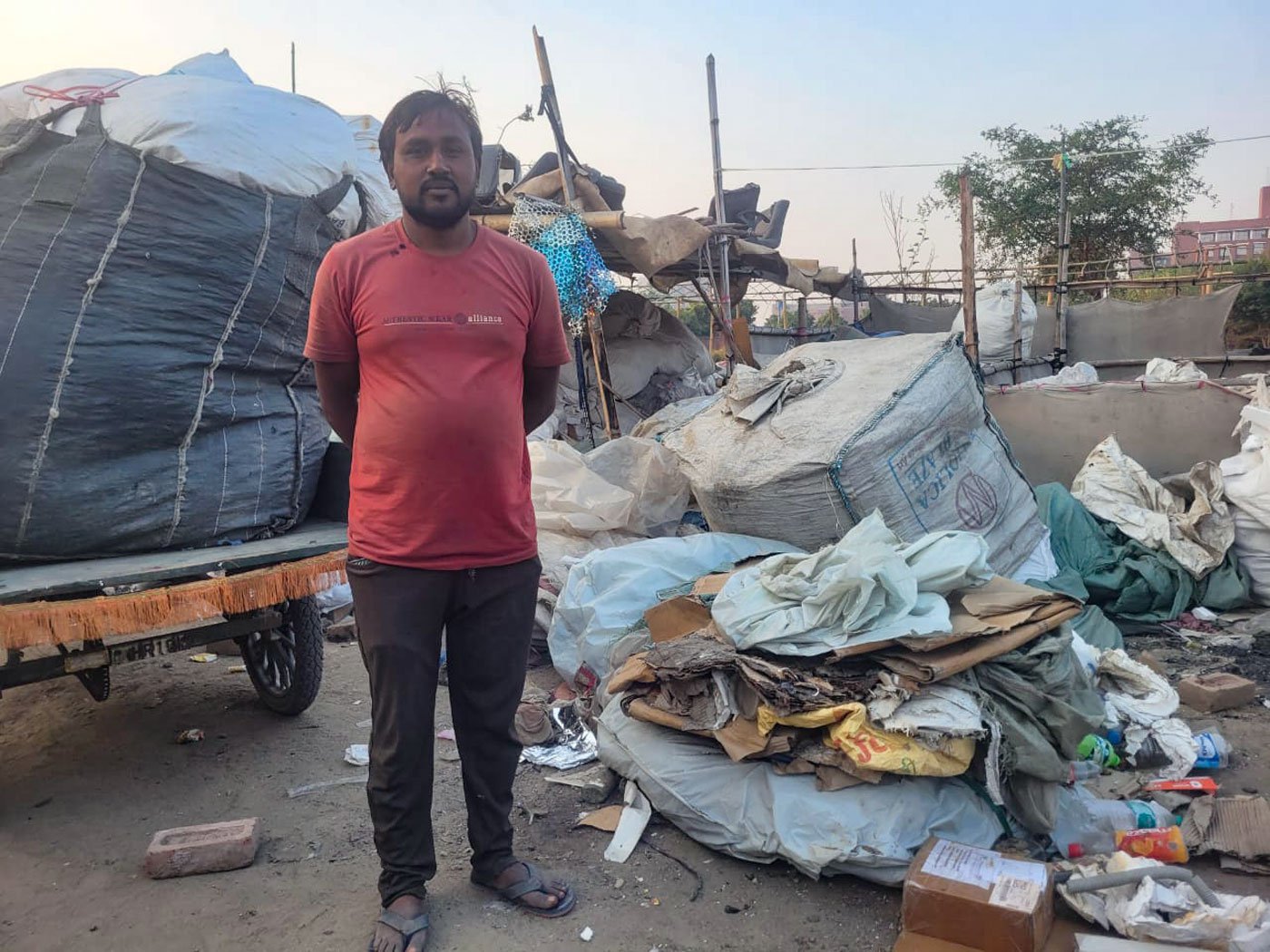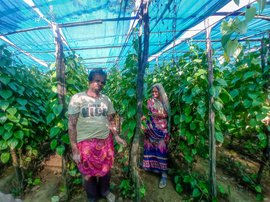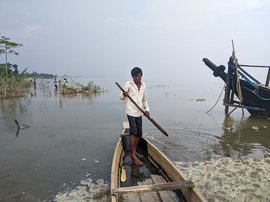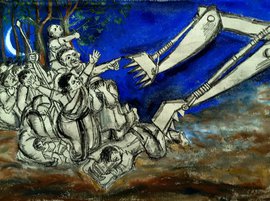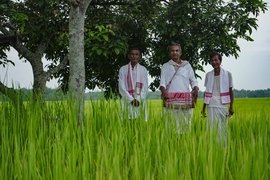“We've spent our entire lives presenting documents and proving to the government and fellow citizens that we belong to this country just like everyone else here.”
Baharul Islam is busy segregating waste. He is making different piles – of plastic bottles, wet garbage, cardboard and thermocol, shoving each into separate plastic sacks. The 35-year-old is part of 13 migrant families from the districts of Barpeta, Bongaigaon and Goalpara in Assam. They all live together on a plot of land in Asawarpur town of Haryana, and their livelihood is waste picking and segregation.
“People question our identity all the time, both here and in Assam.” Baharul says that officials keep turning up at his slum demanding documents from everyone. “When we go to pick up the waste, people ask us where we are from. Upon hearing Assam, they assume that we are Bangladeshi.” He adds that the police often ask for police verification from Assam to ensure they don’t have a criminal record. “What we say doesn't matter,” says Baharul who is aware of the National Register for Citizens (NRC) being conducted in Assam but says he is not worried as he has land ownership papers.
Also living in the same compound, brothers Riyaz
and Nur Islam say they left Assam as the constant flooding of their land near
the Brahmaputra made it impossible to rely on farming. Back in Barpeta, their
parents farm 800 square feet of land where they cultivate green chillies,
tomatoes, and other vegetables. “During heavy rainfall, the river water enters
our houses, and we have to leave. We use banana tree logs to travel from one
place to another,” say the brothers According to the
National Remote Sensing Centre (NRSC)
, about 28.75 per cent of land in Assam state has
been affected by floods between 1998 and 2015.

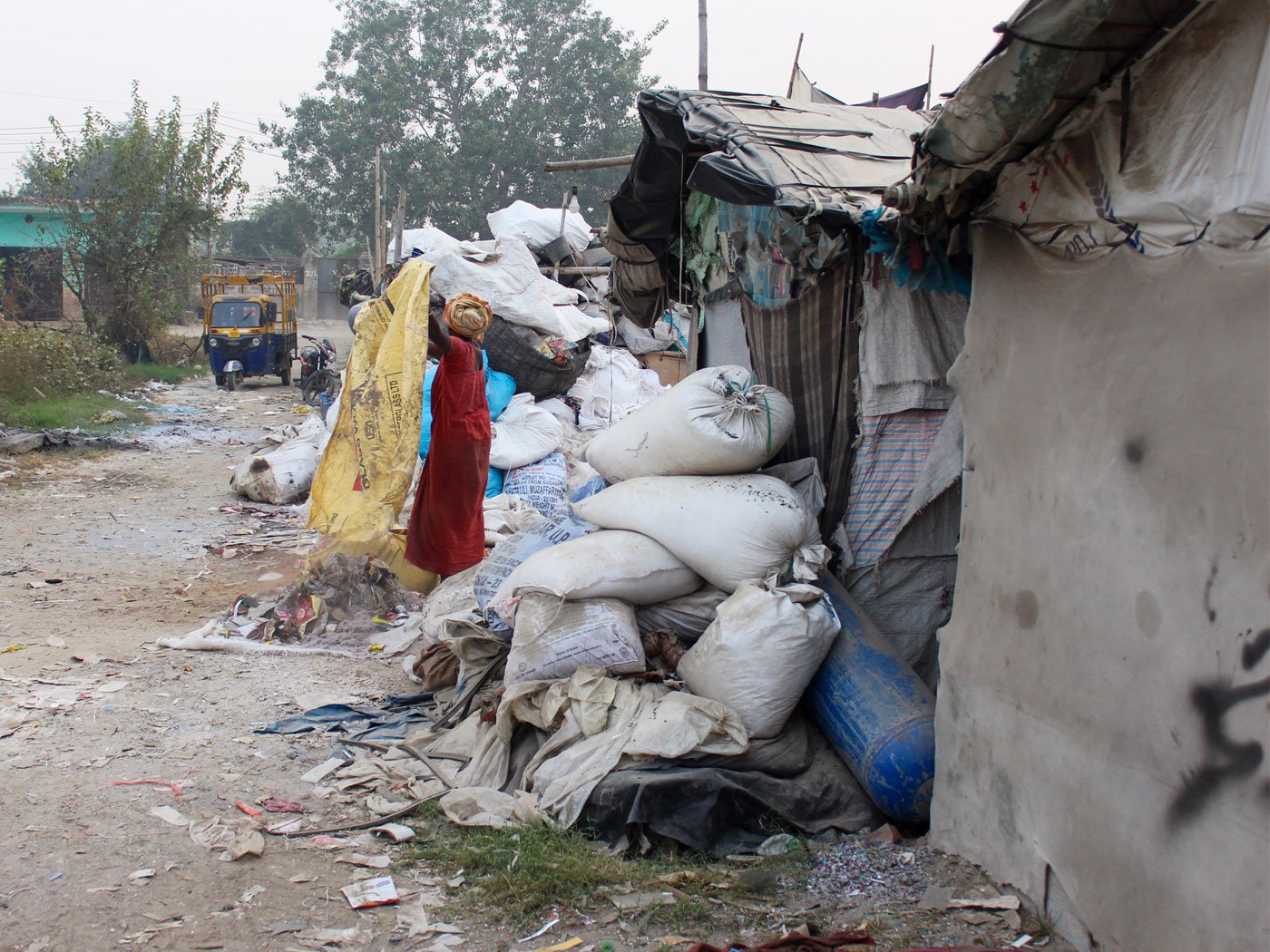
Left: Baharul Islam dumping the collected waste on the ground to segregate it. Right: Garbage bags stacked on top of each other next to Baharul's house in Asawarpur village in Haryana


Riyaz Islam (left) and his brother Nur (right) moved to Sonipat in Haryana as frequent floods in their hometown in Assam made it impossible to continue farming
Baharul, Riyaz and Nur now live thousands of kilometres from their homes in Assam, as do 11 other migrant families – all from the districts of Barpeta, Bongaigaon and Goalpara in Assam. They work and live together, lending support to each other in this alien environment and helping cope with the daily stigma of migrancy they encounter.
Baharul says, “if someone here needs money, we lend it to each other. Since only a few can [afford to] return to Assam and their families, we celebrate festivals like Meethi Eid and Bakrid together here. During Ramadan, we occasionally share sehri as well.”
Most of the families arrived before the pandemic in 2017, and the rest followed in 2021. Together they rent this space for Rs. 17,000 a month, each family paying up a little over a thousand rupees. Women like Baharul’s wife Mofida help too. Mofida, also from Bongaigaon, is a Class 10 graduate and can read and write English, besides Assamese. She helps with measuring and noting down the waste collected by each family in a small book.
All the families work around waste: some collect
garbage from residential areas, while others like Baharul collect waste from
the neighbouring factories and industrial areas. Young children also help doing
chores like segregating the waste, and they sometimes even go along with the
adults to help in gathering waste.


Left: Both Baharul and his wife Mofida work on segregating the waste to sell it to the dealers. Mofida helps with measuring and noting down the collection done by each family living in the compound. Right: Baharul's makeshift home is made with tarpaulin stretched on bamboo poles


Left: Nur works on collecting garbage around the city from 7 a.m.to 3 p.m. Right: Residents of the area are collecting plastic waste to sell to the dealers
“We start our day at 7 in the morning, going inside the city to pick up waste and then come back at around 3 p.m.,” says Nur Islam, but adds that if the volume of work is more, they might return at 9 p.m. Once the waste is collected, it is segregated into roughly 30-35 categories: used bottles, plastic sacks, chapatis , thermocol, glass products and more. “We then sell the waste to local dealers,” says Baharul. The dealer decides the price based on the demand, and the waste pickers must accept it. “The price of a kilo of thermocol varies from 15 to 30 rupees,” says Baharul.
Family earnings range from Rs. 7,000 to 10,000 a month – the higher amount coming through in the summers when more water sold in plastic bottles is consumed.
“Almost half of our income is spent on rent, electricity, and water bills. Electricity and water charges are separate. The electricity bill reaches around 1,000 rupees,” says Baharul. The families also have to buy the drinking water from a supplier, as the tap water available in the plot is unfit for consumption.
Baharul mentions that spending on food adds more to their expenses. “We receive ration at home [in Assam],” he says referring to foodgrains given through the PDS (Public Distribution System). “But here [in Haryana], a Haryana ID card is needed for rations, which we don't possess.”
Baharul is unaware of the ONORC (One Nation One Ration Card) – a nation-wide portability scheme since 2019 which is aimed at ensuring food security for all, including internal migrants within India. “I am not aware of it,” he tells this reporter.


Plastic bottles (left) bring in good income. The waste is segregated (right) into used bottles, plastic sacks, chapatis , thermocol, glass products, cardboard and more


Children (left) often help out. The families say that officials keep turning up at their homes to demand documents from everyone
Their makeshift homes are made with tarpaulin stretched on bamboo poles. Their homes and the piles of sorted and unsorted waste spill into each other, and their children run and scamper around. According to this report , only 55 per cent of children who migrate to cities with their parents are likely to attend school. Many children living in this locality are choosing to work instead of continuing their education. Anwar, Riyaz’s 12-year-old son, discontinued schooling after completing Class 3. He now assists Riyaz with waste picking and segregation. “Nobody wanted to come near the son of a kabadiwala. I had no friends. To help my father, I dropped out,” says Anwar.
Before he arrived in Sonipat, Baharul worked as a college security guard for three years in Chennai. “I moved here following the footsteps of a fellow villager,” he says.
“If I were to tell my parents and village people that I engage in this work, I would feel ashamed,” says Baharul. “I say I work in small jobs in schools.” He says he feels the challenges in migration in other ways too: “In Assam, fish is a key part of our diet. However, some neighbours look down on us if we eat fish here; we have to cook and eat it very secretly.”
His dream is to earn enough money to buy a small plot of land in Assam and go back to living with his people. “No one likes to lie to their family members, we all want to live dignified lives.”